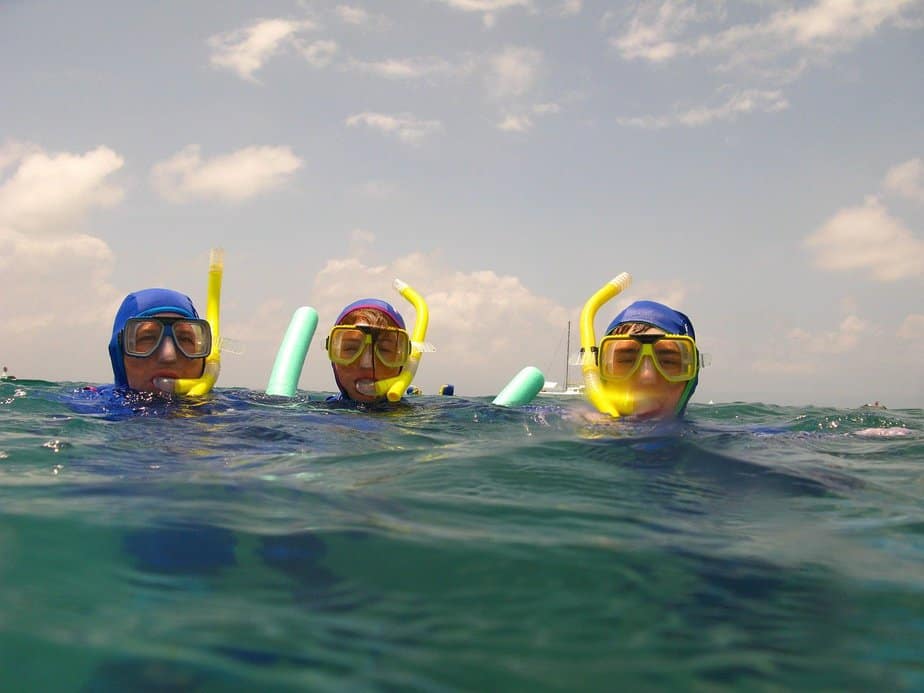Snorkeling consists of floating along the surface of the pristine and calm waters of the tropical destination you’re at, taking in the awe-inspiring views underwater and perhaps doing the occasional dive to get a close-up look. Can such an activity be considered a sport, let alone an extreme sport?
Snorkeling is often lumped under the umbrella term “water sport” with the likes of such extreme activities like scuba diving, spearfishing, freediving, and so on. There is a debate as to whether snorkeling is a sport or if it’s something else. However, adventure-seeking snorkeling enthusiasts have invented numerous variations of snorkeling that undoubtedly are considered sports by whatever definition you go by.
Those of you who are adrenaline junkies may be excited at the prospect that snorkeling can be more challenging and sport-like. Well, hold onto your snorkels, because in this article we’ll be diving into the most extreme variations of snorkeling that will appease all of the sport-loving people out there.
Why isn’t snorkeling a sport?
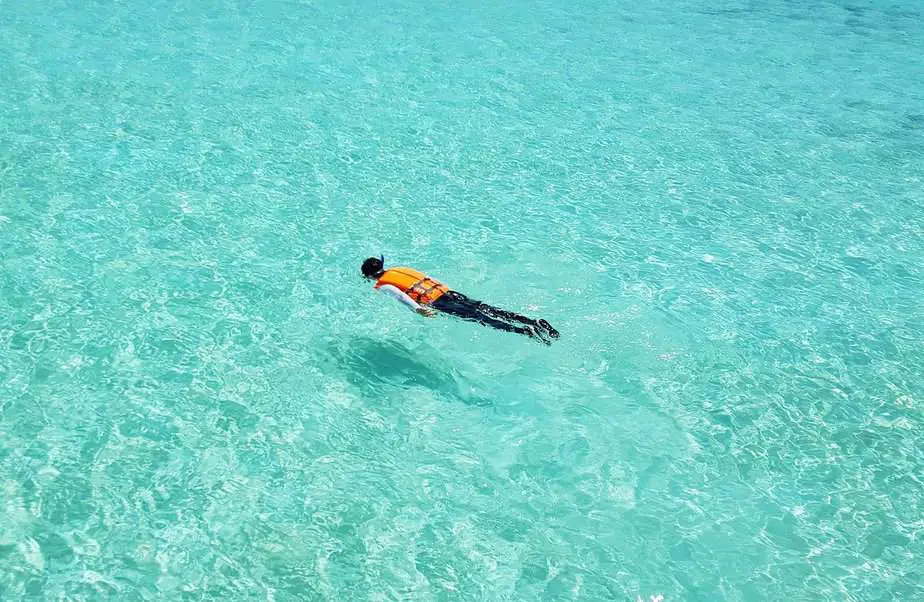
Why is snorkeling not a sport? Who here loves arguing semantics? If you do, then you’re going to love this section.
As much as I love to champion snorkeling, unfortunately the people who say snorkeling isn’t a sport have a point. First of all, let’s define the term snorkeling as recreational snorkeling. That means participants are at least wearing a mask and snorkel, preferably with fins, and possibly a flotation device and wetsuit/rash guard if they want to.
These casual snorkelers are merely floating along the surface of the water, face down, breathing through the snorkel with slow, deep breaths, and just trying to enjoy the oceanic view. A slightly more advanced snorkeler may occasionally do a skin/duck dive to get a close look at something interesting, but that is the upper limit of their physical exertion.
As you can see, recreational snorkeling is pretty darn relaxing and easy for many people. Under normal circumstances, it requires little effort and is highly accessible. For this reason, it is an especially popular way for people to see underneath the water with little investment or effort in tropical vacation resorts.
In fact, even though we don’t recommend it, it’s technically possible for a non-swimmer to snorkel if they are wearing a life jacket. With minimal instruction, one can get the basics of snorkeling down without learning how to swim. All of this is to say that snorkeling might not meet the requirements to fall under the definition of a “sport.”
What is a sport?
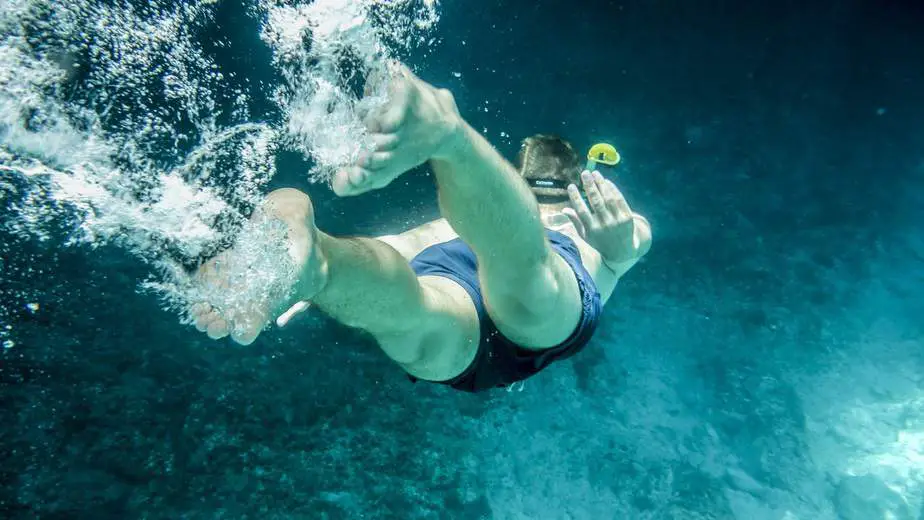
The Oxford Learner’s Dictionary describes a sport as an “activity that you do for pleasure and that needs physical effort or skill, usually done in a special area and according to fixed rules.”
Based on what we described above, how many boxes does snorkeling tick? It certainly is an activity done for pleasure. However, it’s questionable how much physical effort or skill it requires since even a non-swimmer can do it. It’s not done in a “special area”; bodies of water cover 71% of Earth and most are open to all. Lastly, there certainly aren’t any fixed rules for snorkeling, though there are recommended practices.
Furthermore, we need to consider what other sports have that snorkeling doesn’t. Many people agree that a sport should have competition. It doesn’t necessarily have to be done with a team, however it does need at least one opponent.
Next, the “fixed” rules part of the definition often implies a scoring system of some kind. As long as players follow the rules, they can get points or get penalized accordingly if they break the rules. After an arbitrary winning condition is met, based on the rules, we can compare how much the winner won by. If a competition is very close, it makes everybody more invested, player and audience alike.
That’s yet another point: sports don’t necessarily need to draw an audience, however an activity that can’t draw a crowd is difficult to legitimize as a sport. Since snorkeling is so easy, nobody is going to watch with bated breath the way you’re floating along the surface of the water. It’s fun for the snorkeler but boring for everybody else.
Now, to its credit, snorkeling courses are offered by dive training agencies. However, they are not a requirement for one to be able to snorkel, and the techniques taught in these courses are not enforced by any authority.
Furthermore, some snorkelers can turn this activity into a competition by trying to cover as much distance as possible, however this just seems like swimming with extra steps. As you’ll learn later on in this article, there have been some snorkeling super-fans who have managed to turn this activity into a competitive, extreme sport.
Is snorkeling merely a hobby?
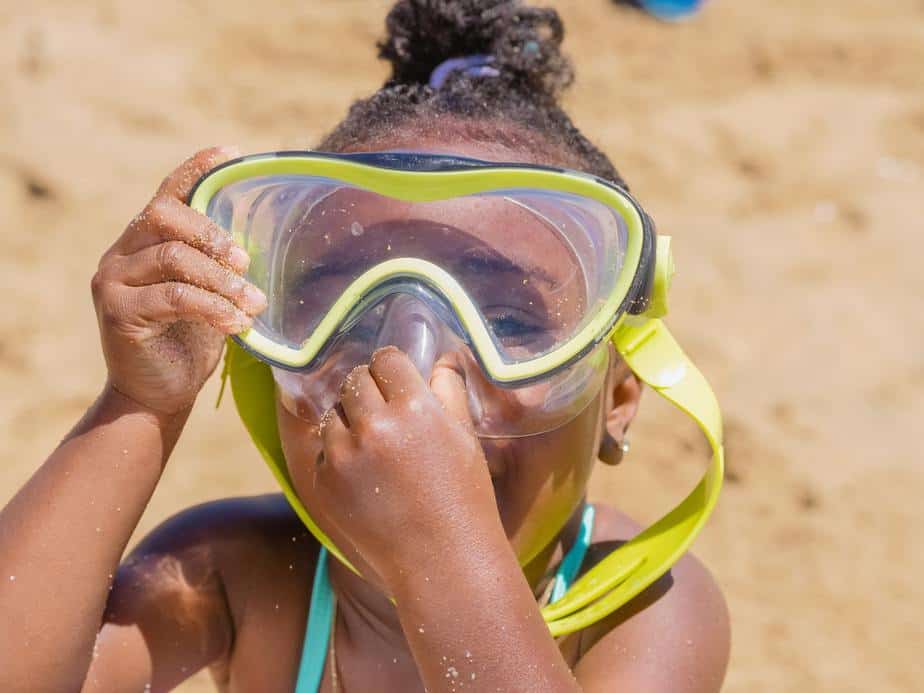
The Oxford Learner’s Dictionary says that a hobby is “an activity that you do for pleasure when you are not working.” A sport can be a hobby, but not all hobbies can be sports.
For example, you could also paint or play guitar as a hobby, but most people would not consider those activities to be sports. When something is a hobby, it implies a certain casualness about that activity. Sports are generally thought of as more competitive in nature, and hobbies are generally quite laid-back and easygoing.
For the reasons given above, even though sports can be hobbies, since snorkeling fails to meet many of the requirements that most sports have, the closest labels one could give are hobby or leisure activity or something like that.
Snorkeling variations that are competitive sports
After our explanation that snorkeling is not a sport, you might be feeling a little bummed out. Many people felt the same way as you, but some of them took it a step further and decided they would create an entirely new sport from snorkeling.
Some people thrive off of adventure and the adrenaline that doing difficult (possibly dangerous) activities can give them. The activities described below all utilize a snorkel, however they are nothing like snorkeling and can be considered a sport.
Freediving
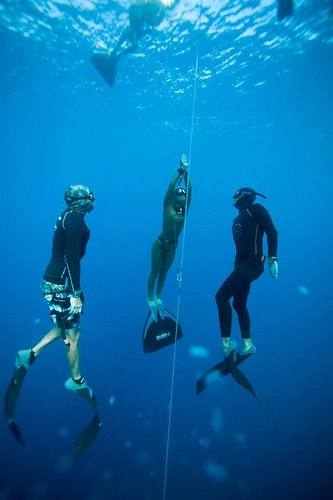
Freediving is a proper extreme sport with an official organization that keeps official records of the most impressive dives done in competition. Freediving is well regulated, with official competitions hosted yearly and very clear rules on what the freedivers can and can’t do.
There are many categories a freediver can compete in such as Dynamic With Fins (DYN), Constant Weight (CWT), and the No Limit (NLT) category. These athletes are literally staying underwater for as long as they possibly can with only a single breath-hold, diving down to depths that most humans will ever reach, and successfully making it all the way back up.
World class freedivers compete to see who can do this suicidal activity the best. How’s that for extreme? Granted, at the most professional level, the athletes probably aren’t using a snorkel because that’s just extra drag they have to deal with. However, during training a snorkel can help freedivers conserve energy while they wait by the surface.
Plus, freediving is very similar to duck diving. As we mentioned, advanced snorkelers will sometimes perform a breath-hold dive much like a freediver. The difference between these two activities is that freediving is done for the purpose of either diving as deep as possible or staying underwater for as long as possible. It’s not intended to be a fun leisure activity.
Spearfishing
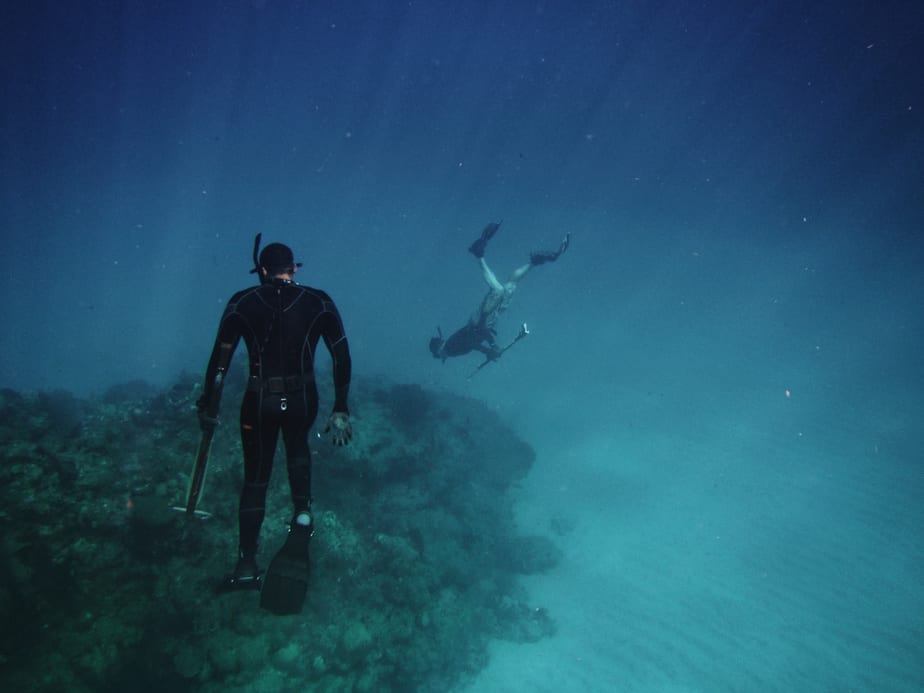
Spearfishing is also quite similar to freediving, where the spearo will dive down while wielding an elastic or compressed gas-powered speargun to capture fish. Spearfishing competitions are often held monthly by spearfishing clubs.
You might be thinking: spearfishing sounds a whole lot better if you were scuba diving instead. One could stay underwater for longer and catch more fish. And that’s precisely why scuba diving spearfishing is illegal in many countries. The extra time that scuba gear provides would allow spearos to catch too many fish.
Scuba gear would also take the “physical effort and skill” part of a sport out of the equation. International competitions are only performed by breath-hold spearos. The snorkel is a great way for spearos to be able to breathe while searching for fish by the surface.
Underwater football
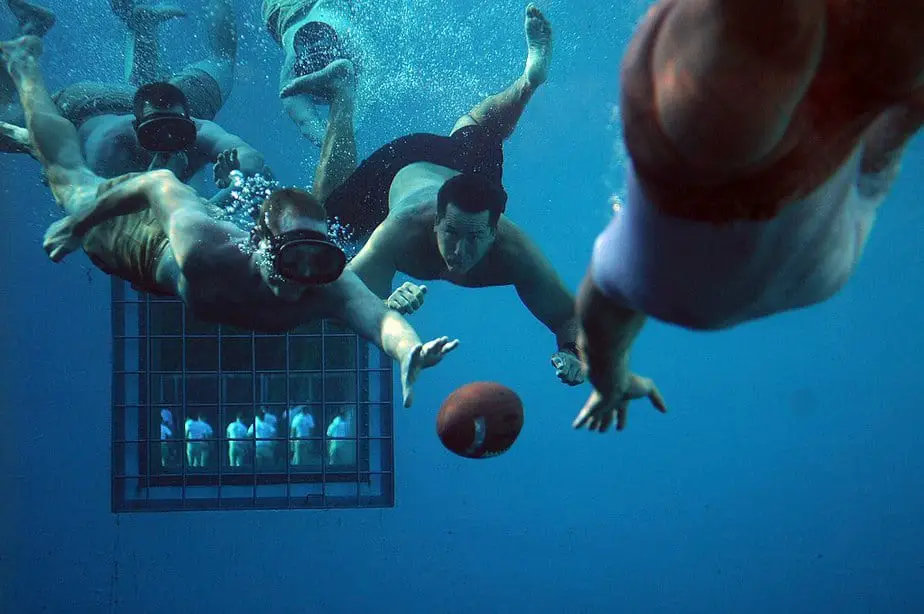
Here’s an easy way to legitimize snorkeling as a sport. Take an existing sport, decide to play that sport underwater, and wear full snorkel gear while doing it. Boom! That’s how we have underwater football as a sport.
Underwater football shares some elements with underwater hockey and underwater rugby (two other sports that have made it onto this list). Like the two other sports mentioned, it is also played in a swimming pool with full snorkeling equipment (mask, snorkel, and fins).
How it works is this: two teams face off underwater by trying to maneuver a slightly negatively buoyant (sinking) ball from one side of the pool to the other’s “goalpost” which is called a gutter. The players must be completely submerged in order to carry the ball. A team scores when one player from that team places the ball in the opposing team’s gutter.
The ball types used may vary, but they are often one of: a 10-pound pool brick, a junior sized basketball, or a junior sized NFL-style football. Each ball should be negatively buoyant (sinking in the water). To achieve this, the ball must be filled with a liquid that is denser than water, such as corn syrup or a strong saline solution.
This sport is most often played in Canada in the provinces of Alberta, Manitoba, Newfoundland and Labrador, and Saskatchewan.
Underwater rugby
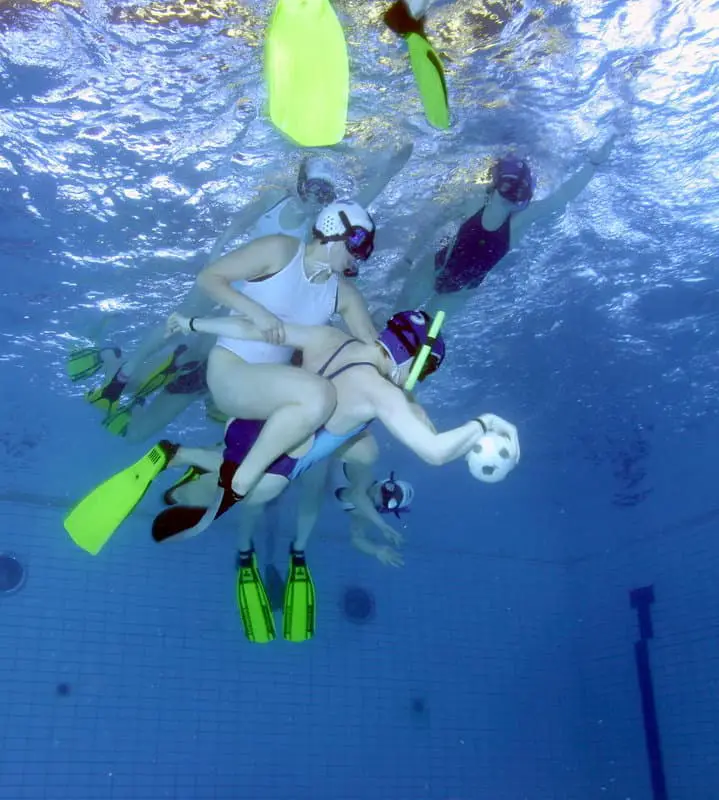
Underwater rugby is little in common with regular rugby football except a shared name. To play it, two teams try to score a negatively buoyant ball in the opposing team’s goal which is located at the bottom of the pool.
The standard playing area is a pool that is around 3.5 – 5 m deep. Each team has six players, and players are trying to send the negatively buoyant ball into the opponent’s goal. Due to how fast-paced and exhausting this sport is, subs are often sent in to replace tired players.
The ball can be passed, however it must stay underwater at all times. Due to the weight of the ball and the strong water resistance, the ball typically never goes more than about 2 – 3 m. Thus, player positioning and tactics is crucial to pass or intercept the ball and score.
All of these underwater team sports require excellent speed, stamina, and teamwork to best the opposing team.
Underwater hockey
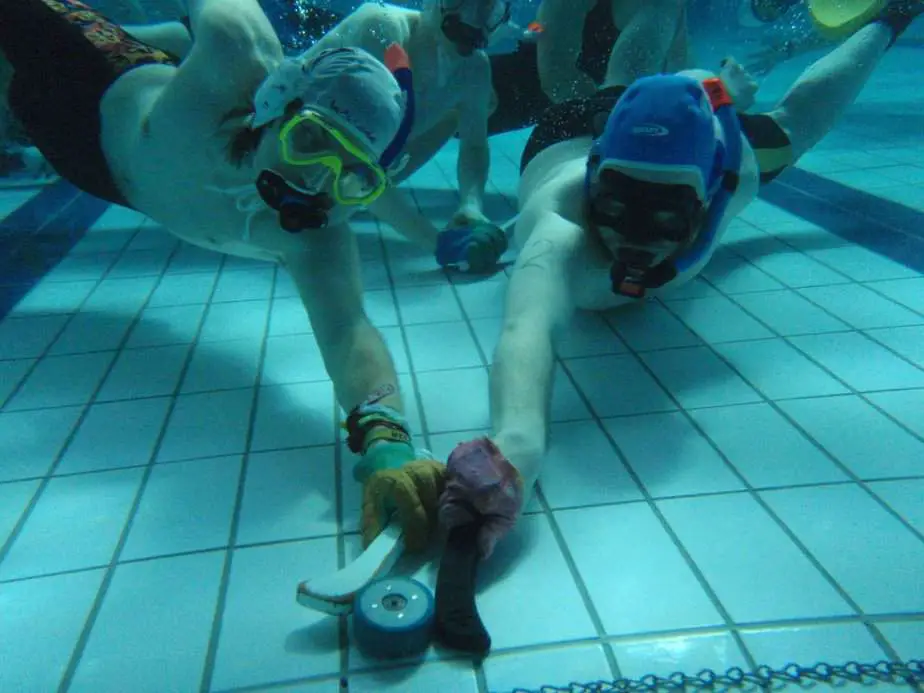
Next, underwater hockey, also known as Octopush, is very similar to underwater football and rugby. However, it requires one extra piece of gear: the hockey stick (or pusher), and a puck replaces the ball.
Underwater hockey is played worldwide, with the Confédération Mondiale des Activités Subaquatiques (CMAS) as the world governing body.
To play, two teams of up to 10 players compete, with 6 active players from each time at any one time. The remaining players can be substituted on the fly as the active players tire and get swapped out.
Beyond that, underwater hockey is quite similar to traditional hockey. There are many penalties that are similar to traditional hockey such as rules against using the stick on someone else to harm or impede them. If the referee calls foul, the offending team is pushed back 3 m (10 ft) and the other team gets free possession.
Underwater ice hockey
Underwater ice hockey is perhaps the most extreme sport on this list. It technically requires no breathing apparatuses, and the athletes need to surface for air 30 seconds or so. However, divers do still wear the usual mask, fins, and wetsuit.
How ice hockey works is similar to regular hockey. Where it differs is that players are playing it underwater, upside down, using the underside of the frozen surface as the hockey rink. The puck they use needs to be positively buoyant so that it will stay on the rink’s “floor.”
This sport is not to be confused with underwater hockey. It was started by an Australian freediver who was well-renowned for setting numerous world records by freediving under ice. As such, ice hockey is more similar to freediving than snorkeling, but there are some similarities which is why it makes this list.
Underwater target shooting
Yet another official sport governed by CMAS that involves using a snorkel is underwater target shooting. This sport tests each competitor’s speargun shooting skills, and events can be done individually or as a team. This sport is conducted in a swimming pool using snorkel equipment and freediving breath-hold techniques.
The goal of this sport is for competitors to hit targets that are 33 cm x 35 cm (13 in x 13.8 in) in size. The centre of the panel is 80 cm (31.5 in) above the pool bottom. The panel is sufficiently rigid enough to hold a spear in place after it has been impaled. The face of the panel will have a target sheet affixed to it. Each sheet has 5 targets printed on it for individual events, and 9 targets are printed in 3 rows of 3 targets for team events.
Each competitor can only shoot from behind the shooting line which is located 4 m (13 ft) from the face of the targets. The individual events are Precision and Biathlon, and the team event is called a Relay.
Since this sport relies on sharpshooting skills and not size, strength, or agility, this sport allows both men and women to compete against each other. However, there are distinct men’s and women’s titles even though events are conducted as mixed gender.
Finswimming
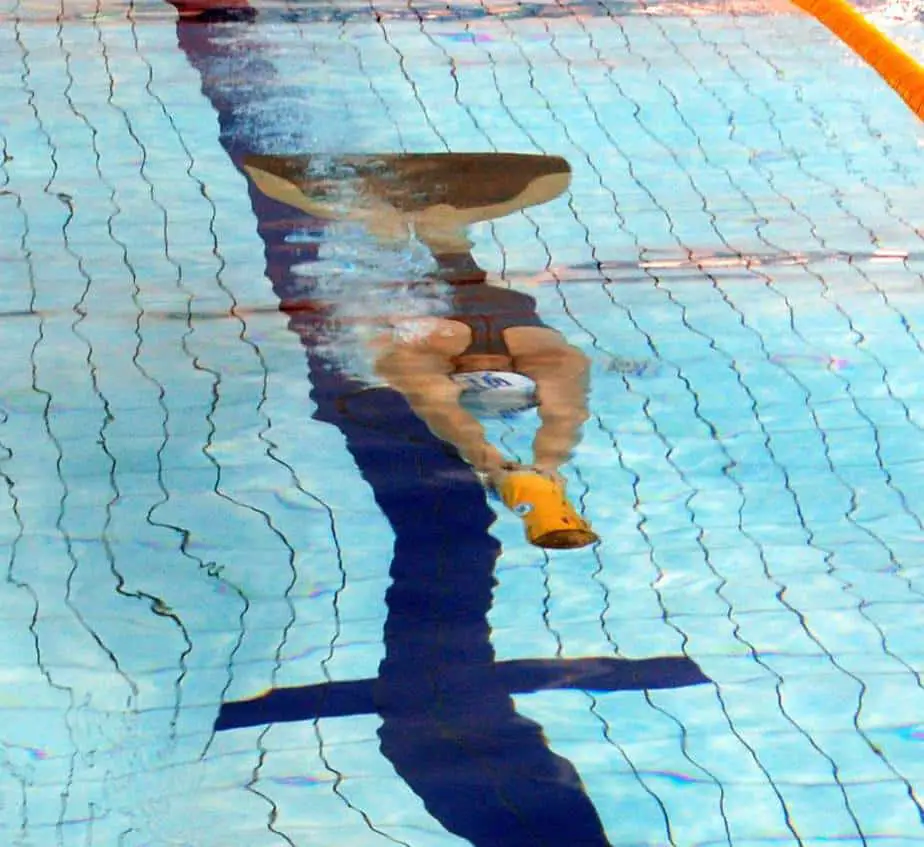
Another snorkeling activity that has been made into a sport is finswimming. In this sport, the athletes will perform one of four techniques involving swimming with fins as the name implies. The swimming can be done either by the water’s surface with a snorkel, or underwater with scuba gear, or by holding one’s breath.
The fins used can either be a monofin/mermaid tail (a large fin that both feet can fit into) or bifins (one fin on each foot). The events are similar in distance as swimming competitions, and competitions are held at the continental and world level by CMAS.
The aforementioned four techniques are: Surface finswimming, Apnea finswimming, Immersion finswimming with breathing apparatus, and Bi-fins. Participants are grouped based on age range, with few other restrictions.
Bog snorkeling
Lastly, we will end with bog snorkeling. As the name suggests, competitors will be racing each other by racing in a bog channel while wearing mask, snorkel, and fins. The channel is 60 yards (55 m, 180 ft) in length, and the person who reaches the end the fastest wins.
While competitors from around the world do participate and take the events seriously, some competitors will wear silly costumes and race for fun.
When might snorkeling become “extreme”?
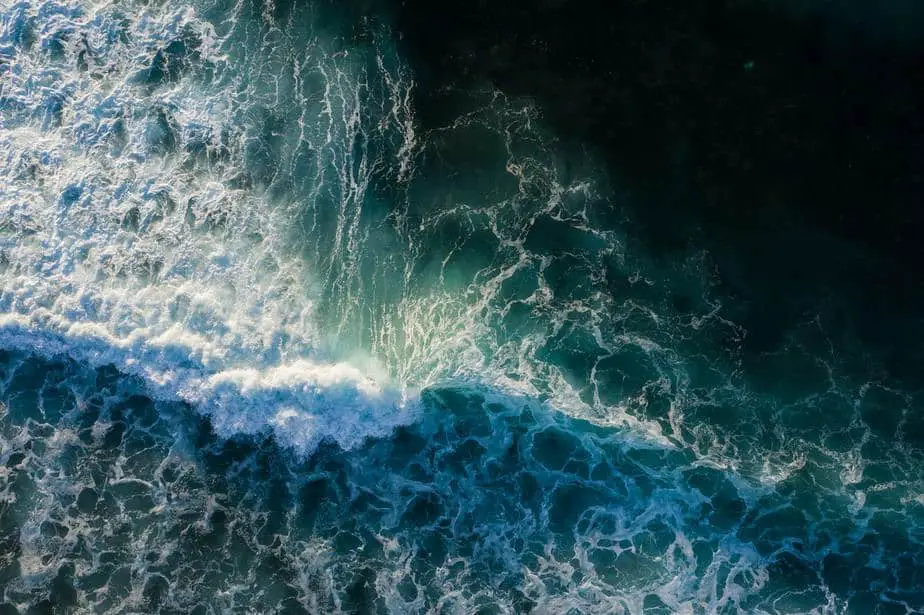
Even though snorkeling is generally a relaxed and laid-back activity, and we don’t consider it to be a sport, sometimes mother nature can turn your snorkeling session into something more extreme than any other sport. This is especially true if you’re drift snorkeling.
You might start off your snorkeling session in calm, tranquil waters, but the weather and water conditions can rapidly change. You might unexpectedly end up fighting for your life as strong currents and waves start tossing you around. This is not likely to happen, particularly if you’re checking your surroundings from time to time, but nature can be unforgiving.
There is also a risk of a dangerous encounter with marine life. Most marine life will mind their own business, but if you provoke them, they can attack in self-defense. Marine life will rarely seek out humans and attack them, but if you end up getting stung or bit by one, your snorkeling session will take a turn for the worse because of it.
Another rare but potential risk is a medical condition of yours suddenly flaring up in the middle of snorkeling. For example, if you’re asthmatic, you may suddenly find it impossible to breathe through a snorkel. Depending on how bad your condition is, you should consider getting a check-up with your doctor to see if it’s safe for you to be in deep water.
Thus, we highly recommend wearing a flotation device; a life jacket for beginners, and a snorkel vest for advanced snorkelers. That way, if you are ever incapacitated for whatever reason, you can at least rely on the buoyancy aid to keep your head above water. Furthermore, we recommend snorkeling with a buddy. You can watch each other’s backs and carry each other to safety or call for help if an accident occurs.
Parting words
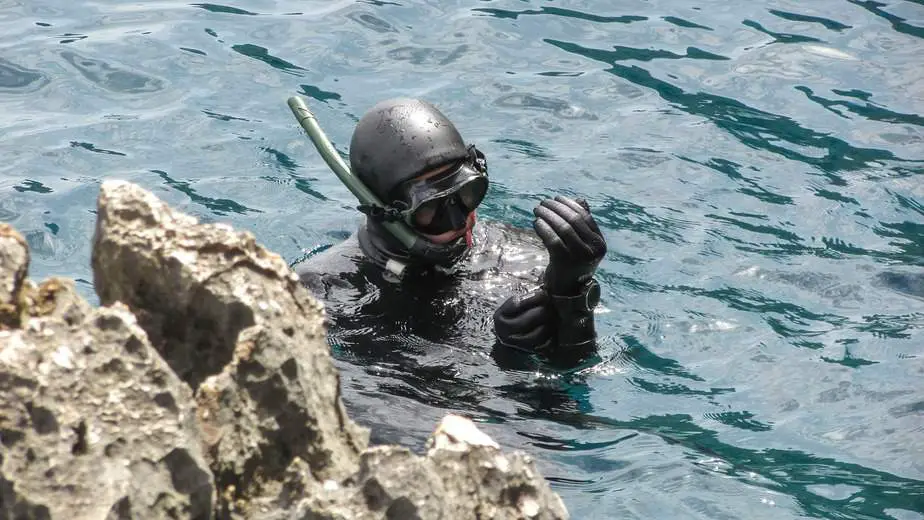
Recreational snorkeling is a fun, relaxing, and accessible activity that almost anyone can do, even young children. The goal of snorkeling is to merely observe the aquatic world from the surface. Thus, since there is no competitive aspect to it, it’s hard to argue that it’s a water sport.
With that said, some challenge-loving people have decided to put their own twist on the usually laid-back snorkeling activity, and turned it into an extreme sport. Many snorkeling sports were a happy accident after the founder decided to add a ball into the mix and come up with some rules. The rest is history.
Today, there are many legitimate sports that involve the use of a snorkel, mask, and fins, with competitors taking part worldwide and official events hosted by a governing body. These sports are indeed extreme, and you should not participate in it unless you are a strong swimmer. They often include some degree of breath-holding, so you might have to brush up on your breath-hold techniques.
However, if you want to play a water sport that involves the use of a snorkel, there are plenty to choose from. While snorkeling itself is not a sport, it has many variations that are legitimately a sport with competitors, official organizations, and strict rules to adhere to. This might sound like too much effort than it’s worth, but if you’re a fan of the challenge, then there’s an extreme sport for you to enjoy with your snorkel and mask.

